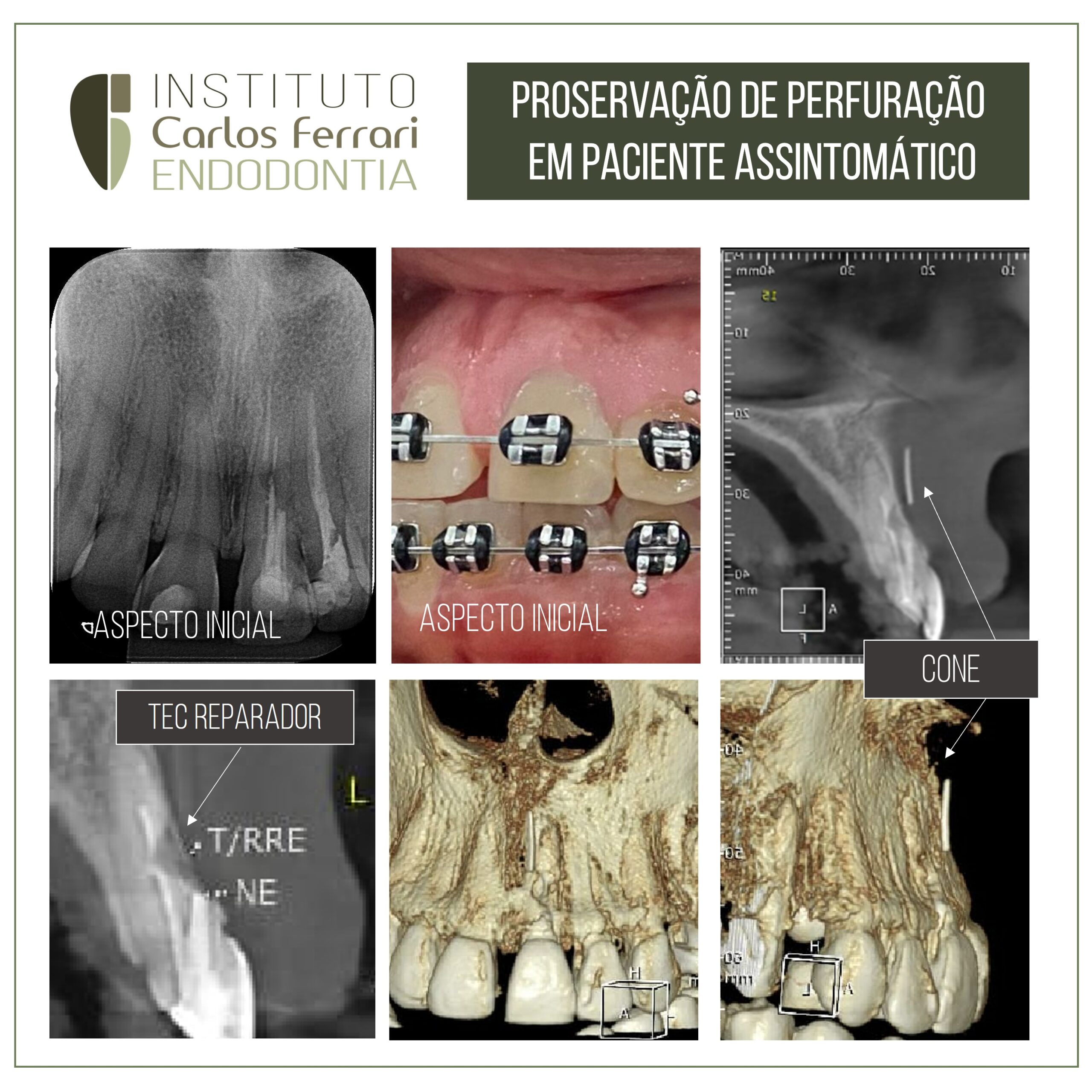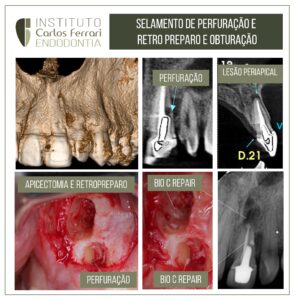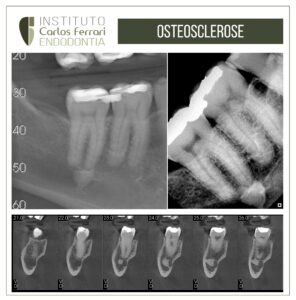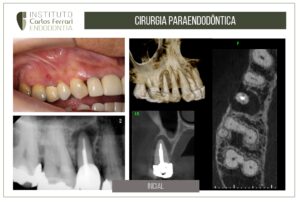Endodontic perforation.
In some situations, the clinical evaluation and the patient's decision must guide the management in favor of more conservative treatments, or even just the follow-up.
A patient sought evaluation by an endodontist after a dental surgeon noticed in a periapical radiograph the presence of a perforation in a tooth that had been endodontically treated about 8 years ago, therefore it was a radiographic finding, since the patient reported never having had any signs or symptoms.
On clinical examination, normal aspect of the gingiva, and no sensitivity to palpation and percussion tests. Radiographic examination revealed a perforation image compatible with a gutta-percha cone in the vestibular gingival region, in addition to the endodontic treatment performed. On tomographic examination, an image compatible with bone formation in the perforation gap was seen, suggesting possible repair of the area.
After orientation regarding treatment alternatives, the patient opted for clinical and radiographic proservation, as there are no signs or symptoms.
Case followed up together with the dental surgeon Isabely Francelino.
In: AmeneiroA.M. Perforations, an Endodontic approach Universidade Fernando Pessoa. Dental Medicine Course Porto 2018
Introduction
The aim of a successful Endodontic treatment is to ensure the correct sealing of the Root Canal System (RCS), that is, that no microorganisms are transported from the root canal to the periapical tissues, and to restore the function of the tooth.
Therefore, it is necessary to have a good instrumentation of the root canal system and consequently a good disinfection of the same. However, during the endodontic treatment, several errors of iatrogenic origin may occur, one of them being the occurrence of perforations, which require the need to solve them.
It is described in the literature that one of the factors that significantly affects the success of retreatment is the pre-existence of lesions associated with the tooth (Farzaneh, Abitbol and Friedman, 2004).
The incidence of perforations cited in the literature ranges from 3% to 10%. And about 7% to
12% of successfully performed endodontic retreatments had preexisting perforations (Clauder and Shin, 2009).
A perforation, whether iatrogenic or of physiological origin, is the artificial communication of the pulp chamber or SCR with the periodontal tissues. This communication between the two media allows the passage of bacteria from the SCR to the periodontal tissues and vice versa, which will infect the periodontal tissues, compromising the integrity of the tooth, and in many cases extraction is the only solution (Tsesis and Fuss, 2006).
Endodontic perforation.





